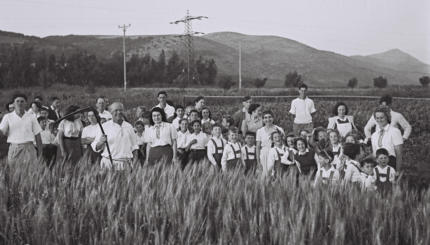For those of us engaged in the lifelong passion and struggle of learning Torah with a feminist consciousness, writing it all off as yet another element of patriarchal religion is not an option. Baruch Hashem, Thank God.
Like any good midrash that offers a creative response to a textual problem, feminist theory offers us several methods to deal with problematic texts. These methods broadly include: approaches that attempt to complexify the narratives we see by showing different layers of the text and different historical developments (see for example, Dr. Ilana Pardes for Bible and Rabbi Dr. Judith Hauptman for rabbinics); readings that focus on women and bring out new layers of their complexity through midrash and parallel sources (see Dr. Tikvah Frymer-Kensky’s work); readings that look at the symbolic elements of the text as in some Hassidic, Psychoanalytic, and Kabbalistic readings of Torah (See Dr. Avivah Zornberg); and finally readings that bring out and emphasize the patriarchal nature and the violence of the text (see Dr. Phyllis Trible). There are many other brilliant scholars who are creating beauty and redemption through their midrashic, philological and hermeneutical work. Blessed be they!
Trible calls this mode of reading that emphasizes the violence of the text, “Texts of Terror.” She approaches some of the most difficult of texts from a feminist perspective and sees them as a reflection of how patriarchy and the victimization of the feminine and gender dichotomization is expressed through the text.
It is with this “Texts of Terror” approach in mind that I am coming to read Lamentations this Tisha B’Av.
Lamentations Chapter 1, Verse 8-9 read:
8. Sinning she sinned, Jerusalem.
For this an outcast / niddah (menstruant) she became.
All who honor her despise her,
for they saw her nakedness.
Also her, she is moaning,
turned around backward.
9. Her blood / tum’ah (spiritual impurity) in her skirts,
she didn’t remember her end after,
she descended wondrously.
There is no comforter for her.
YHVH, see my poverty, my humiliation,
For an enemy became great.
This Tisha B’Av, instead of fighting against the images of female humiliation and victimhood, I am inviting myself and others to enter into the pain that these texts evoke for us, and in fact use them as an opportunity to explore our own lived experience of this breach of the feminine, and to allow ourselves to be with it inside our own bodies and experience. This includes allowing ourselves to grieve and mourn it, and then to let that mourning connect us back up to the destruction of Jerusalem and the breach of the Jewish people.
The metaphor of the humiliated woman that I once had to fight against because of the pain it evoked in me, becomes a portal for me to connect to my own lived experience and to bring a sense of authenticity and immediacy into my mourning of Jerusalem. In addition, we can reframe the use of this imagery to see that in fact, the metaphor places the wound of the feminine at the center of the gaping wound of the Jewish people. Now our challenge is to be able to move forward without re-wounding that original wound but with feeling, naming, validating, and expressing.
This invitation to use the humiliation and devastation of the feminine as an entry into to the mourning evokes two images:
1-In my Sexual Politics undergraduate class I lit a yahrzeit, memorial, candle and read out a list of all the things that had happened to the bodies of women in my family. The list included a whole array of breaches and abuses related to genocide and being a concentration camp inmate; sexual abuse of various kinds; plastic surgery; food regulation; sexual promiscuity; subjection to the beauty industry; control through financial dependence; involuntary hospitalization; psychiatric medication of different kinds, and more.
2-In my early 20s, just after the tutorial mentioned above, I first started learning Torah and I used to carry my lesbian separatist lecturer Dr. Sheila Jeffreys with me on my shoulder into the Beit Midrash. Sheila said jokingly that she used to “lose all the best feminists” to theology. Sheila rocked my world when she introduced me to the idea that normative heterosexuality within a male-dominated society was centered around the eroticization of subordination. Hence the predominance of sexual violence and pornography, not to mention sexual slavery and trafficking. And I wanted no part in that. Although it was to take many years — as I have written about elsewhere — to get that internalized self-objectification out of my head, and the battle is not completely over. With Sheila on my shoulder, I encountered Torah simultaneously with an unfolding of the loving-kindness and presence of the Divine like nothing I had ever known before, and simultaneously with the darkness and visceral pain in my body of what women’s exclusion and obliteration has meant over history. I tuned in to a sense of collective memory that was being channeled through my own body.
This year, as we connect to the imagery of violation and humiliation of the feminine that comes up in Lamentations, let it bring us to more awareness both how we carry inside us the violation of the feminine, and also get us activated against the real time violations happening right now in sexual trafficking, child sexual abuse, incest, sexual slavery, rape, pornography, and women’s impoverishment.
Torah
Pronunced: TORE-uh, Origin: Hebrew, the Five Books of Moses.



